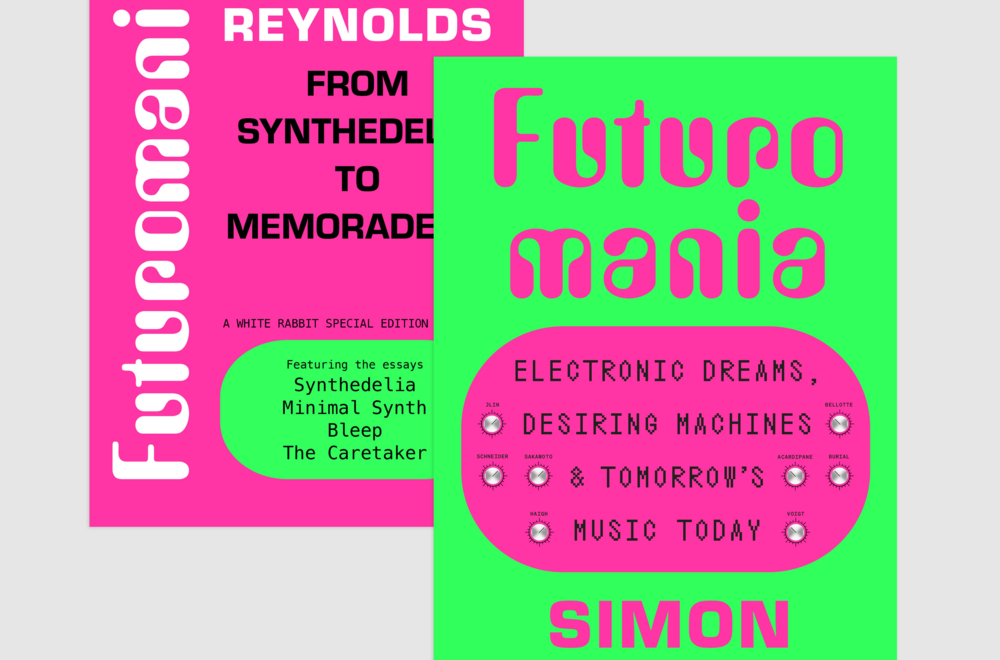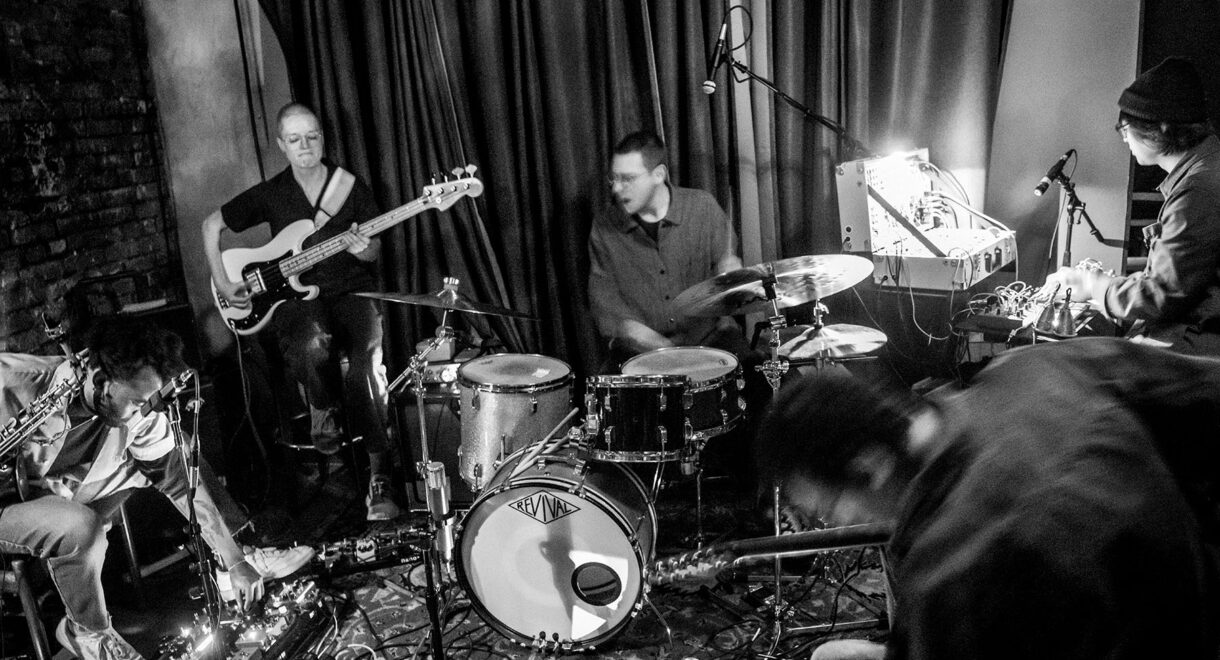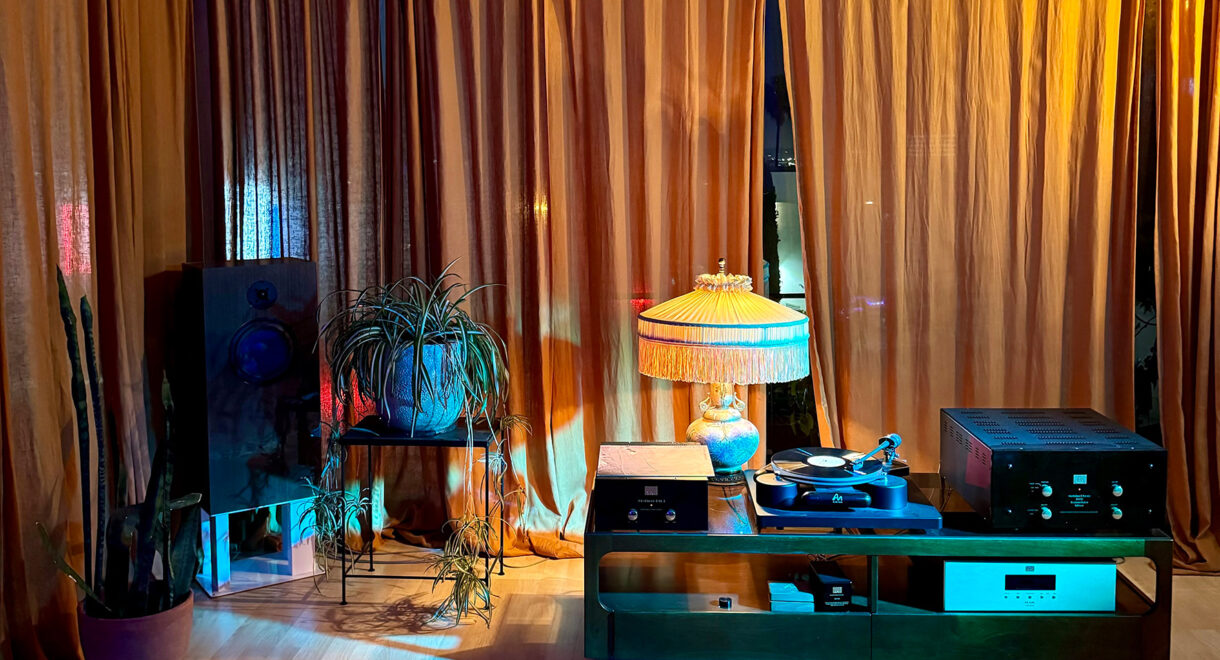“Dubwise but not exactly dub, rich in ambience but not exactly ambient music.” With three of the classic Sade albums (Promise, Diamond Life, Stronger Than Pride) recently repressed […]
Nothing Can Pull Us Apart: West Coast Psychedelic Dance with Pilgrims of the Mind
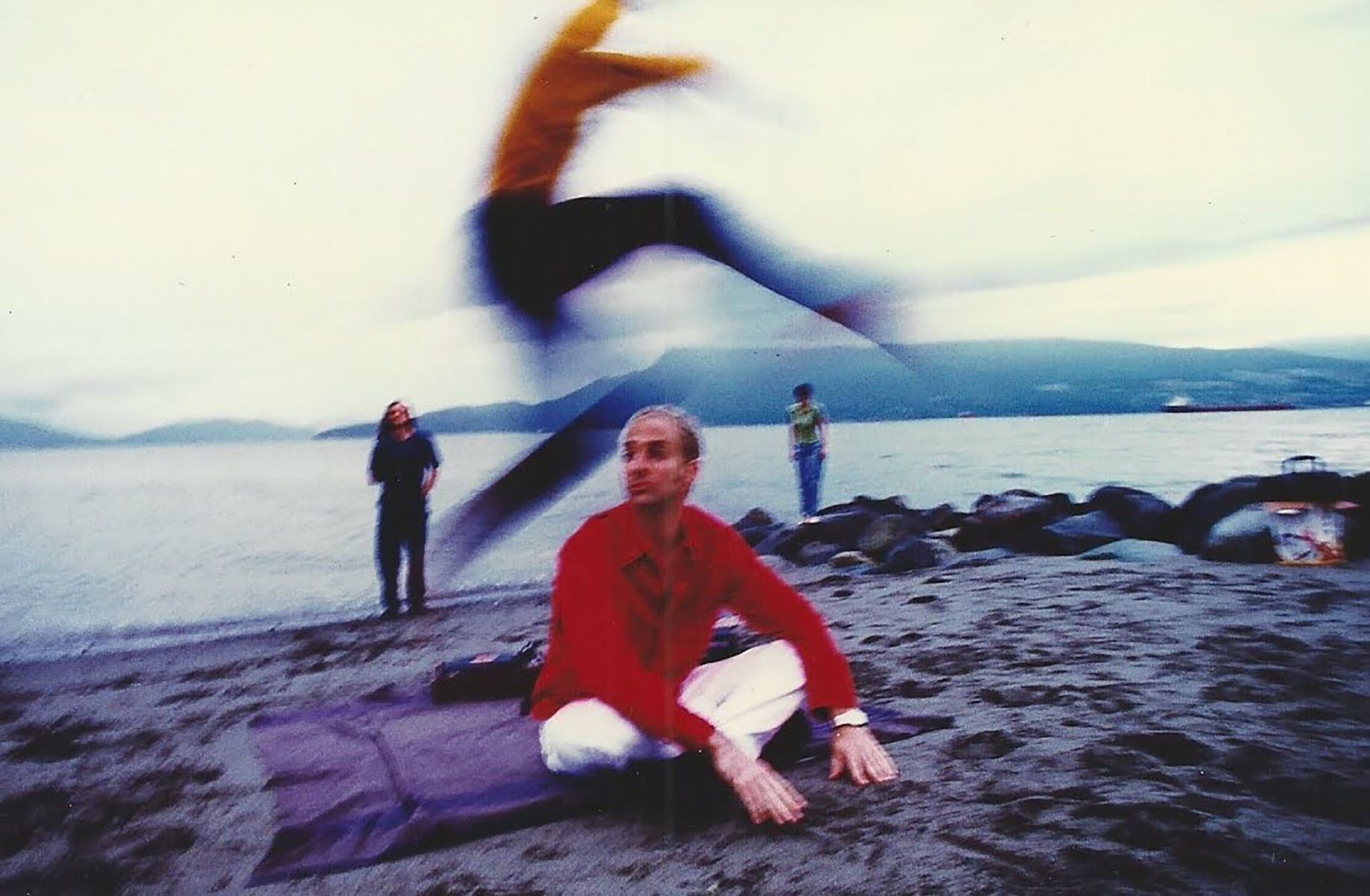
Heels & Souls are pressing Pilgrims of the Minds’ West Coast classic What’s Your Shrine? for the first time ever on vinyl.
Turn the dial back to 1996. Hundreds of miles away from the midwest raves in Chicago and Detroit, an underground electronic music scene is forming on the West Coast in the warehouses, beaches, and valleys of Vancouver, British Columbia. Deejay and writer Robert Shea launches Map Music, an independent label dedicated to supporting a small pool of brilliantly talented electronic artists emerging in the coastal city. The label’s first release, a compilation titled Welcome to Lotusland, features artists Phil Western (Cap’m Stargazer), Dan Handrabur (Dreamlogic) and his wife Cristina (a duo, Mere Mortals), and Stephane Novak (Pilgrims of the Mind).
Isolated from other dance music scenes around the world, the artists present a sound that is uniquely West Coast: psychedelic, mind expanding, and completely unconstrained by genre.
A year later, Map Music would release Pilgrims of the Mind’s What’s Your Shrine, an album that went on to become one of the defining documents of the scene. The album’s nine tracks are a delicate and meticulously crafted fusion of various styles of dance music including progressive house, downtempo, ambient, tech house, and trance. Electronic music magazine XLR8R would feature the album in their February 1998 issue describing it as “a different sound, not merely adhering to trendy styles or dead-end one-up-man-ship, ‘What’s Your Shrine’ helps define what is really going on in the underground. It is an evolution of sounds and styles weened on the dancefloor, creating a music which can truly weave its way into your everyday life…”
On Friday (Dec. 9), 25 years after its initial release, London-based DJ duo / label Heels & Souls will release What’s Your Shrine for the first time on vinyl. In Sheep’s Clothing’s Phil Cho spoke with Stephane Novak over Zoom to learn more about his musical background, the underground West Coast scene, seminal tracks, and more.
Hello Stephane! We absolutely adore this album and are so glad it’s getting a vinyl pressing. I’d love to start at the beginning… What are your musical roots? Any key early experiences that led you to making music?
I was born and raised in Montreal, which was a very culturally rich city musically, with a lot going on. With its proximity to New York and Chicago, Montreal was actually a big disco city in some ways. Although I was maybe too young to take advantage of the whole clubbing thing there at the time, I remember staying up late at night listening to dance stations on the radio where they’d do these long extended mixes, splicing tape and cutting up tracks. Really, really compelling stuff as a teen. It sounded like the future.
Later on, in ‘89 or ‘90, I moved to Vancouver to pursue music. I went to a music school and attended a jazz program. I can’t say I studied hard, but it was a great place to get together with other musicians and artists. More importantly, they had a MIDI studio at the school with a few keyboards and this little Mac, so I started to make little tracks all on my own. That really started my journey. I would lock out time in that studio overnight and do nothing but explore and try to learn on my own because there was nobody to really teach me how to do that stuff.

You’ve described the early '90s as a golden age for underground electronic music in Vancouver. How did you first get into the scene?
Luckily, I found a crew of like-minded individuals shortly after arriving in Vancouver. I remember I hooked up with some friends at a particular club night that was happening around ‘91. It was one of a couple of nights in town where you might catch some snippets of house and techno. Through there, I ended up meeting a lot of the people that would later release on Map Music, a seminal record label from Vancouver, and also another label called Outersanctum. We’re talking about people like Phil Western, Adham Shaik, Dan Handrabur, his wife Cristina, and others.
At that point, in about ‘91, I feel like you could count on one hand the people that were making what you would call house or techno. We all knew each other, so it was a very small, tight group. That circle was really fundamental for me to learn how to produce and get inspired by seeing how other people were working. You’re trying to figure out what gear to get, how to use the gear, about new music and records, and learning the roots of the stuff so you become very reliant on this tight circle. I remember watching these friends and how they would sound design. They’re just like, “Oh, yeah, we’ll apply a little bit of LFO to this parameter and see what happens, layer this, or hey, here’s a nice way of not always being repetitive with the bassline, let’s get some syncopation in there.” Some stuff is explicitly learned and other stuff you’re learning by osmosis or whatever, but it was such a great incubator for me. I’m so thankful to have been there at that time, around that crew.
We’re not a half a day’s drive from New York, Chicago, or wherever. We were somewhat isolated and it was pretty cool in a way. I think it led to a unique and different take on the music just by virtue of that fact.
Can you talk a bit more about some of the parties you were going to? Any unforgettable nights or moments?
Yes, absolutely. It’s so wild when I think back on it, but it was an abundance of top-shelf choices in terms of nights to check out. Of note, in the mid-90s was a Wednesday night called Ginger Snaps, which was at a club called Mars. For about two years, that was church. You just went. It was in an area of Vancouver called Yaletown, which has since been completely converted to shiny glass condo towers. Back in the day, it was mostly dingy warehouses. Anyway, every Wednesday, they would have DJs playing mostly techno and a little bit of house-tinged stuff, but it was also focused a lot on live PAs. It was mostly local acts and occasionally, you’d have somebody like Richie Hawtin or Speedy J come through, but it was always packed and the crowd was really into the music and very supportive.
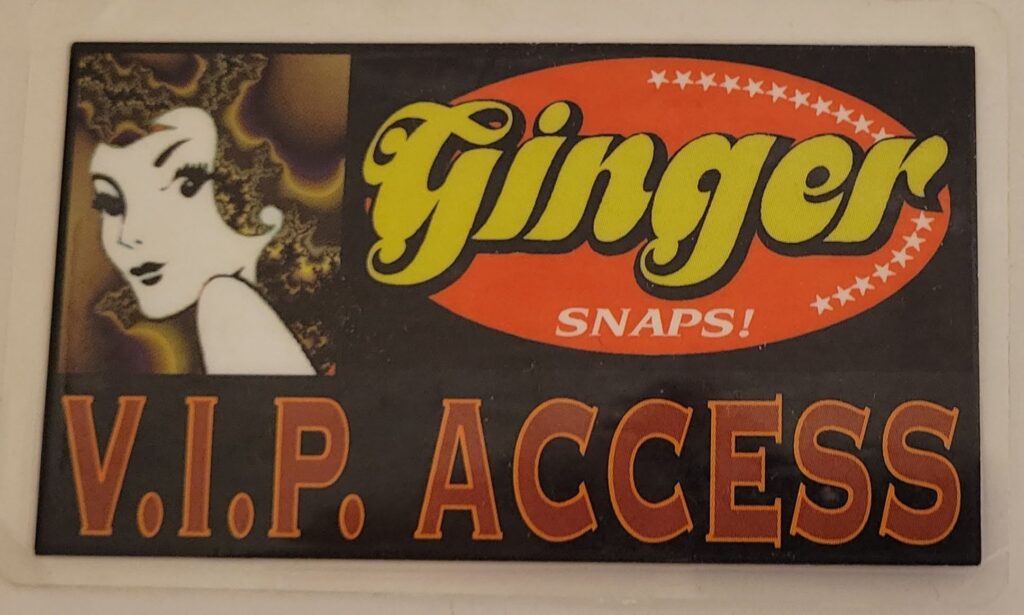
Then summertime, it’s on a beach. It’s in a valley somewhere. I can remember a full moon party with, I believe, John Howard, Jeno, and some other people playing. This was about an hour and a half away from Vancouver in a place called Chilliwack, amongst the mountains in a beautiful valley patch, and we decided to go on a whim, leaving Vancouver at about 11:30 pm. So we all pack into my friend Mario’s car. As we’re getting closer, we decide that we’re going to have our party favors. We get there and we can hear that for some reason, none of the subs are working. We’re like, oh, my God, we’ve driven all this way… and you can see the people that are all around in the field are looking pretty bummed out. Well, Mario, who is still full of energy at that moment, goes to where the generators are, starts tinkering, and in about 15 minutes or so, the subs start coming on… It’s about 1:30 in the morning, everyone there was thinking the night was a wash, but the bass is finally kicking and the place goes absolutely mad with joy. Amazing. You’re hugging your friends, high-fiving Mario because he’s a total hero and fixed the party for, like, a thousand people or something like that. It was absolutely insane. And then of course, the sunrise put on a show, lighting up the mountains all around us… Yeah, that was something else.
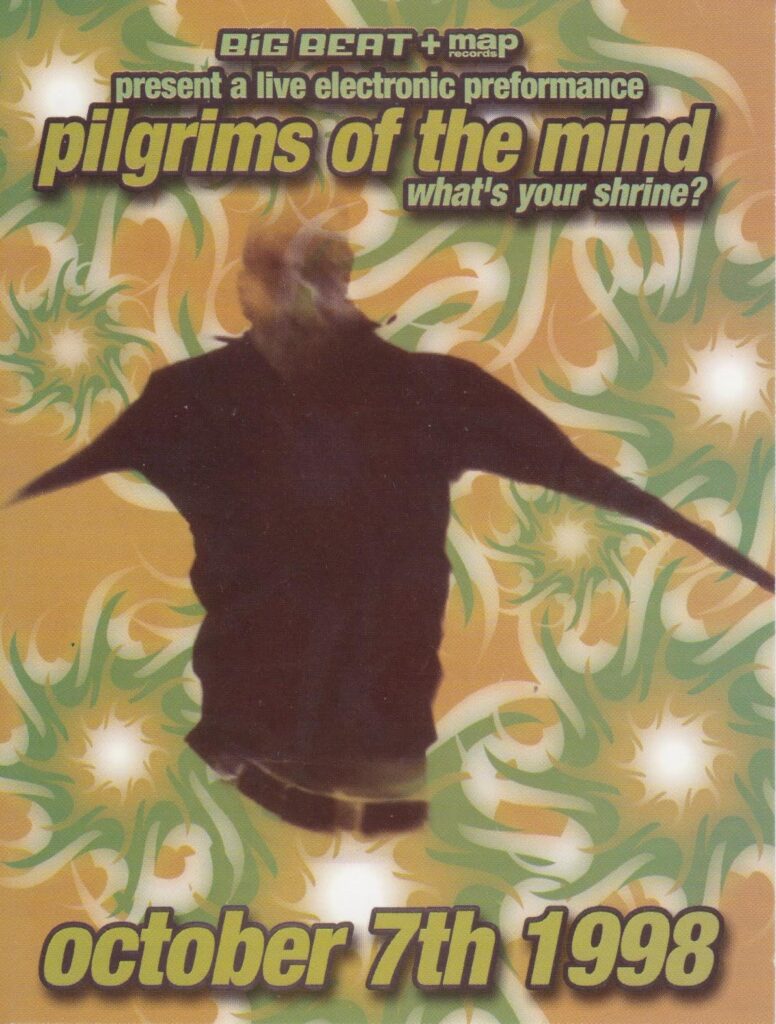
For those unfamiliar with the music and artists from that time/place, can you recommend 5 (or more) essential albums or tracks?
THCOD – Stroboscopik
Stellar track from the equally stellar 1993 Vancouver compilation/collaboration CD, Frequencies From the Edge of the Tektonic Plate, a CD that featured Dan Handrabur (as Dreamdoktor H) working with a cast of producers that used to hang out at the Energy Dome. The Energy Dome was a small two bed apartment/studio in downtown Vancouver where the crew would often gather for late night/all night substance-influenced jam sessions… much sonic madness and discovery ensued.
High Lonesome Sound System – Champion Sound
Come on! It’s 1991, so let’s put this in context: nothing else had sounded like this up until this point. It was fresh as fuck and doing melons in all over town. That rolling drum loop, sub bass, the record scratch and cut-up vocal. Chef’s kiss!
X-Drone – Hallucination Machine
This is Dan Handrabur again. This time working with Adham Shaik (here as “Atom 369”). It came out in 1993, but before the Frequencies… comp. Freaked me out when Dan first played it for me. Felt like some dark, future trance, some kind of proto-Goa. It was a departure from the hippy/trippy vibe, but no less adventurous and forward looking. Pretty interesting also when you consider the style Adham really dove into soon afterwards (see below), which was this spaced out and far more approachable blend of ambient dub – so quite the opposite of this track and the EP its from. Can’t seem to find a stereo version on YouTube… I guess I should be a good global citizen and upload it myself from my 12” copy at some point!
Adham Shaikh – Infinite Emanation
Just two years after the dark X-Drone thing and here’s Adham going full mellow baby! Gorgeous track from the amazing and acclaimed full-length, Journey to the Sun. How good is this?! Production is top-notch and ideas still fresh. Fun fact: somewhere on my album is a pad I sampled, reversed and tweaked from his album. Might be on Sandcastle, I think… it’s been 25 years, so go easy on me… memory is a bit fuzzy.
God Within – The Phoenix
Coming to you from San Francisco, I think we’ve reached peak West Coast sound here, right? It’s totally over the top, but over a big sound system in ‘95, it was pretty hard to be sour-faced when this came on. True high or contact high, didn’t matter. A total peak party track, really, with all the necessary ingredients, head nods and references.
MC2 & Erra – Neptunian Bliss
A tech housey tripping groover, with an absolutely banging 909 kick. This is Matteo Caratozzolo, with Cristina Handrabur summoning the heads through her beautifully Romanian-tinged English spoken words. This sounds really tight, and that’s no surprise. Matteo had a great ear and was the mastering engineer for much of the music coming out of Vancouver in the mid-90s, including my What’s Your Shrine? album.
Obviously the broad range of music played at the parties must’ve been a big inspiration for the album. I was wondering, was the coastal city of Vancouver itself also an inspiration? I noticed some of the archival photos were taken at the beach…
Where we were all living, which was in downtown Vancouver’s West End, you could walk a bit and you’re seeing the beautiful North Shore mountains, the beach, and the ocean. You could walk out to the beach in a few minutes or get in a car and you’re 15 or 20 minutes away in the wilderness. More than anything though, I think it was the hippie culture of the city that’s echoed across the decades and was a big influence. When I think of the West Coast sound, that’s what I think: trippy. There was a lot of weed, mushrooms, and things like that. If you look at the late ‘60s, Vancouver was a pretty happening, little hippie haven. Places like Dante’s Inferno, later called The Retinal Circus, and still there today as Celebrities, hosted the likes of Hendrix and the Doors. Lots of counter-culture, experimental stuff. Vancouver’s had its trippy cred for a while…
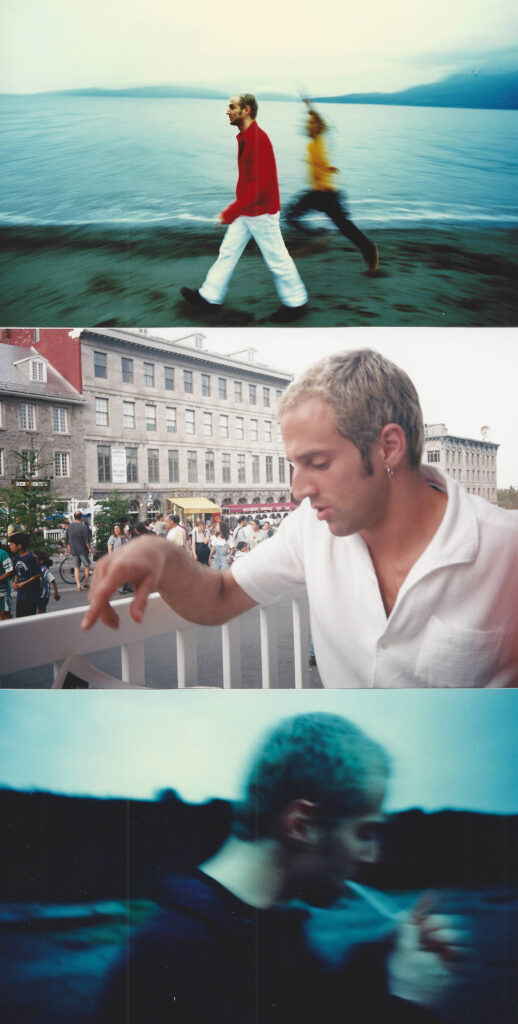
Map Music, Outersanctum, Interchill, all pushed a very broad electronic sound ranging from downtempo, drum and bass, techno, house, more. One thing I’ve noticed, especially with Interchill, is the heavy dub influence in a lot of the music. Can you talk a bit about that and why the dub sound was so prominent?
I remember Dan Handrabur introduced me to some of that early dub stuff and I was just all over it. I loved the sound of the Roland Space Echo tape delay… I heard the echo disintegrating on tape over time as it repeats with that splash of spring reverb, and then it just keeps going and going. That’s exactly what my mind and my ears wanted to hear. I thought, “That’s the kind of ear candy that I need to sink my teeth into.” I think it goes back to the trippy vibe that I mentioned earlier. The Jamaican dub stuff, like Prince Far-I, Scientist, and others, that’s trippy and psychedelic to me. I think it’s all linked together and fit in with the West Coast vibe.
There’s also a connection with Tom Chasteen in Los Angeles and his label Exist Dance. He’s also a big dub guy…
Oh my God. You want to talk about a label? Man, that label blows my mind, what they were putting out in the early ‘90s. You asked about top five records earlier. If somebody wants to get a good feel for what some of the West Coast sound was about, pick up the comp Exist Dance put out in ‘93, Transmitting From Heaven. That’s your primer right there. That’s the hippie vibe in spades. Phil Western and Dan Handrabur released some music on that label as well.
So there was a spiritual link with Exist Dance but, for the most part, you felt like Vancouver was an isolated city?
It really was. The nearest major city is Seattle and that’s across an international border and still 3 hours away. In 1993, Dan Handrabur released a compilation on his label Outersanctum called Frequencies from the Edge of the Tektonic Plate. To me, it was such a great title because it really felt at the time that we were sending out these little transmissions from Vancouver. We’re communicating with the rest of the world by sending little tapes and faxes out, and maybe getting into some little article or review somewhere, and that’s it. We’re not a half a day’s drive from New York, Chicago, or wherever. We were somewhat isolated and it was pretty cool in a way. I think it led to a unique and different take on the music just by virtue of that fact.
In bridging the distances, Robert Shea’s (Map Music) involvement in the scene was also phenomenally important, both in bringing the sounds in and getting them out into the world. Shea held a residency at Graceland in the late ‘80s and basically brought house and techno to Vancouver. With his partner Debbie Jones, he was one of the first to really introduce that sound to the city. Robert and Debbie ran their own club mag called Discotext where they’d interview all sorts of artists from all over the world. That’s how he was developing his network at the time. Pre-social media, right? That’s how you did it. Later, he made a connection with Harthouse in Germany and got directly involved with Harthouse America. In 1996, they put out the Pacific Rhythm compilation featuring West Coast artists.
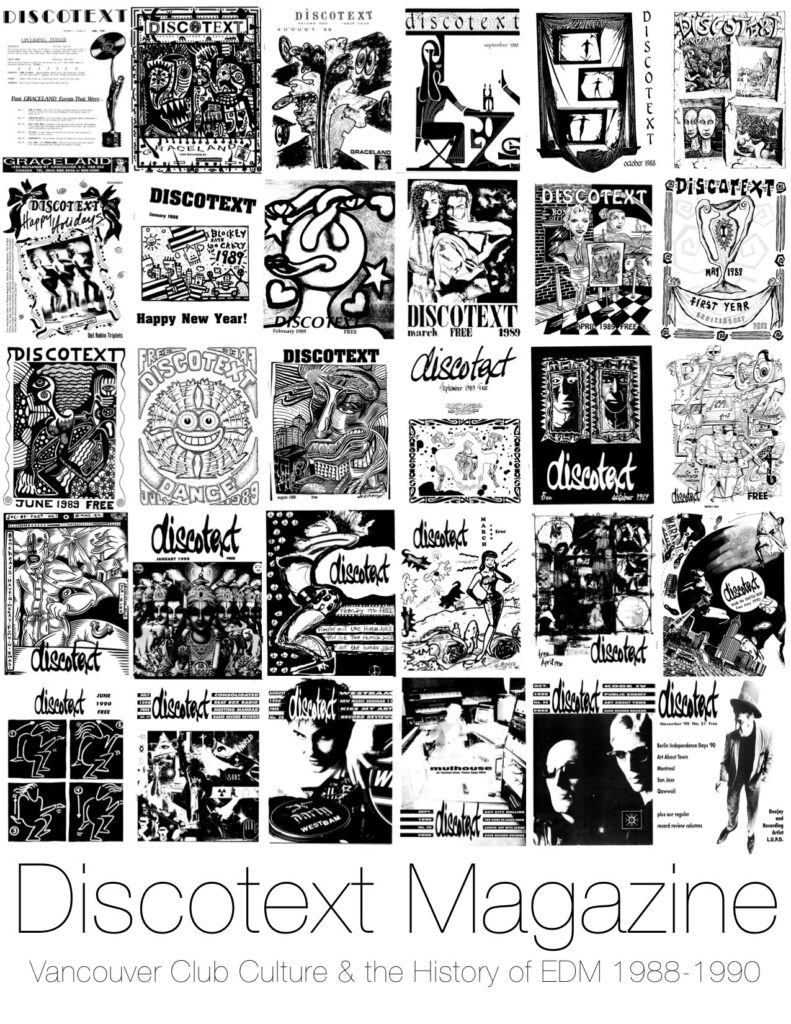
With the reissue coming out, any upcoming plans? More music, parties, live performances…?
Yeah, I’m having a look and seeing what the possibilities are. I love the interest in the back catalog. In the last few years, I’ve put up a bunch of new stuff on my YouTube channel and I’m trying to see what I might do with some of that. Some labels have expressed interest in releasing digitally, but I’m interested particularly in getting stuff out on vinyl. To me, obviously I’m not doing it for the money or anything, but what’s most gratifying is seeing a physical copy of something I’ve done. So I’m trying to partner up with a label that will get the music out on vinyl. Stay tuned!
So yeah.. I continue to be interested in music. My mind is as creative as ever. I often wondered in my 20s what it was going to be like being in my forties or fifties or whatever. What’s it going to feel like? Well, it feels no different. The creative mind only gets more creative. I think it’s like a muscle you can continually work on and have a good time with. And I intend to have a blast with that for as long as I possibly can. That’s very gratifying to be able to do.
As a final thought, what are you listening to these days?
Nowadays, I find myself going back to things I didn’t listen to as much at the time, like drum n bass, for example. Now I’m interested in going back and checking some of that stuff out. For some reason, that’s more compelling to me now than it was then. I’m also looking at dubstep before it became absolute trash… There seems to have been a golden age of interesting things around the Burial time, and also just before that with the darker 2-step and garage stuff. There’s a period of experimentation there that I find quite compelling. I’m also going back to hearing some of the house music that’s stood the test of time. I also look for stuff that’s newer, but I don’t have as much time to sift through that. My ears and mind are still wide open and ready though; I’m always up for a sonic trip!
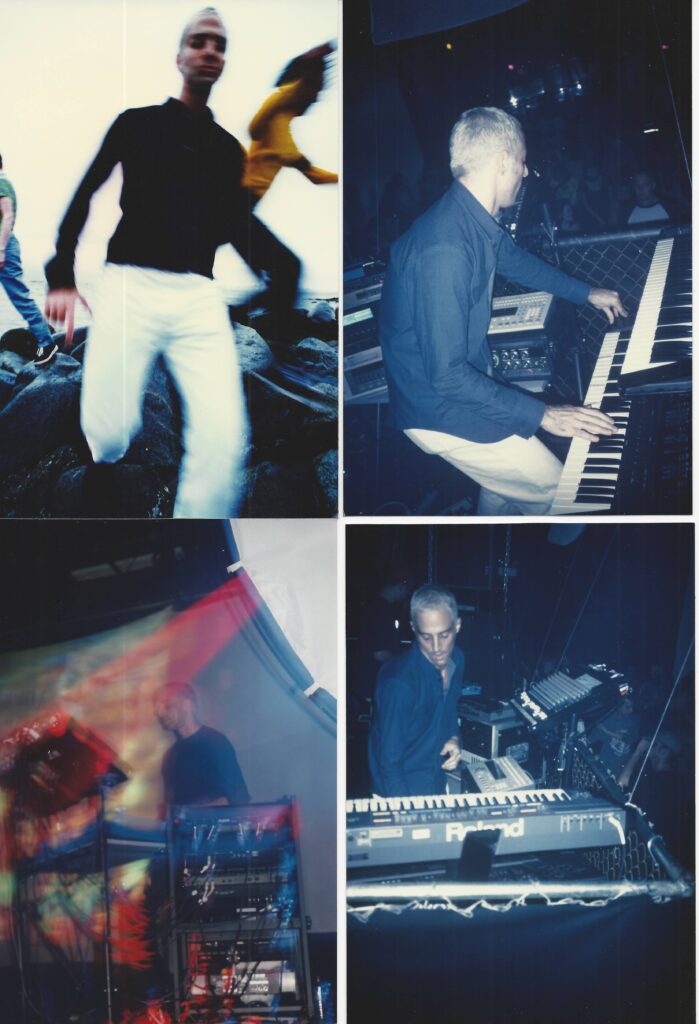
All images in this article courtesy of Stephane Novak.





